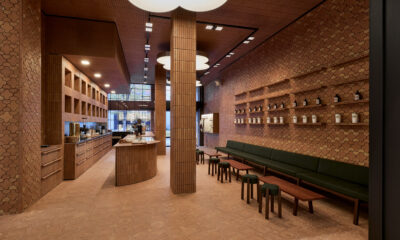We’re in another Romantic Age – a romance with all of the amazing things technology can do.
At its best, it has given us brain implants that reverse paralysis, quantum computers, artificial intelligence, gene therapy and robotics. At its worst, it has given us self-driving cars (why is anyone surprised by all the accidents?), more selfies than anyone else cares to look at and a traveling pocket device with so many features that humans are finally freed of having to look anyone else in the eye.
The biggest retail development in 2018 has been the explosion of stores that allow us to roam and shop, but never appear to be paying for our purchases. “Cashierless” and “checkout-free” are, so far, the best terms the industry has been able to come up with for this phenomenon.
Of course, we pay. As we enter the store, our downloaded app is automatically registered, and the retailer knows what we’re doing, where we’re going, what we’re picking up, what we’re putting back and what we’re carrying out of the store. And we’re being charged for those things, even if we’re avoiding that “found everything you needed?” moment.
Retailers are delighted. The technology is costly, but the amount of staff and furniture on the sales floor can be reduced significantly. Besides, they say they’re pleased to offer their customers this convenience, after years of shoppers’ complaints about the time-gobbling traffic jams at the end of the journey. And finally, they know that they need this technology to survive in today’s competitive retail world. Just as they once needed coupons, kiosks and the malls.
And, of course, the world of technology is delighted. It never passes up those pat-your-own-back moments with “look what we can do now!” delight. (Oh, yeah, you know who else is delighted? Silicon Valley real estate brokers.)
Who’s not delighted? Those same shoppers who for years complained about the very thing this new technology now eliminates. Not all, of course. But some.
Some just hate another new technological challenge when they’re still figuring out the last three. It gives them headaches.
Some are worried about mistakes, about wrong charges and overcharges and, inevitably, about another potential threat to their security. Yeah, don’t bother telling them you’ve got it all worked out, there’s nothing to worry about. They’ve heard that one before.
But here’s the most interesting objection. It feels, to shoppers, like an invitation to steal. And many don’t seem to like that. It makes them uncomfortable. It makes them feel criminal.
Ironically, that’s the one issue that the technology seems to have resolved. Burned by decades of shrinkage, retailers resorted over the years to cameras, sensors, scanners and security guards roaming the floor, which probably reduced shrinkage a little, but never eliminated it. Now, all of the various versions of this new technology seem to close the door on that. A standalone food market in San Francisco uses something called Standard Cognition, that has added consumer-behavior technology to its security arsenal.
“We learn behaviors of what it looks like to leave the store,” Michael Suswal, Standard Cognition’s Co-Founder and Chief Operating Officer, told The New York Times. “If they’re going to steal, their gait is larger, and they’re looking at the door.”
Nonetheless, not all shoppers feel comfortable with what feels to them like the opportunity to exit the store without paying.
When Walmart abandoned its Scan & Go experiment this spring, it said its shoppers were simply not using it. In random interviews, shoppers said they felt uncomfortable with the idea of just walking out with a basket full of merchandise.
Okay, one could argue that, when it comes to adaption to technology, Walmart shoppers are still in the Late Pleistocene Era. But one industry friend told me about the surprisingly low adoption of Starbucks’ preorder-snatch-and-leave app – no waiting in line while the person ahead of you struggles with the Venti-Grande, low-fat/no-fat dilemma. And who’s hipper than a Starbucks customer?
As a journalist, writer, editor and commentator, Steve Kaufman has been watching the store design industry for 20-plus years. He has seen the business cycle through retailtainment, minimalism, category killers, big boxes, pop-ups, custom stores, global roll-outs, international sourcing, interactive kiosks, the emergence of China, the various definitions of “branding” and Amazon.com. He has reported on the rise of brand concept shops, the demise of brand concept shops and the resurgence of brand concept shops. He has been an eyewitness to the reality that nothing stays the same, except the retailer-shopper relationship.


 Headlines1 week ago
Headlines1 week ago
 John Ryan2 weeks ago
John Ryan2 weeks ago
 Headlines7 days ago
Headlines7 days ago
 Headlines2 weeks ago
Headlines2 weeks ago
 Headlines1 week ago
Headlines1 week ago
 Retail Buzz3 days ago
Retail Buzz3 days ago
 Headlines1 week ago
Headlines1 week ago
 Headlines1 week ago
Headlines1 week ago






